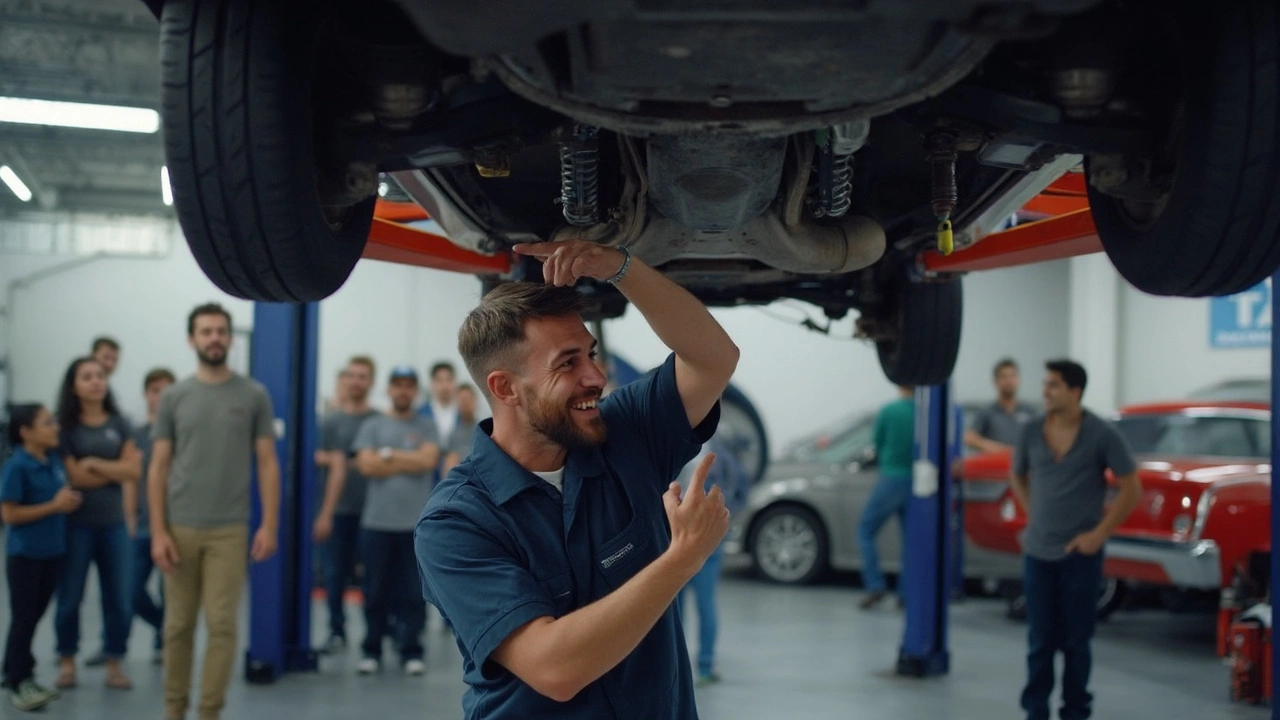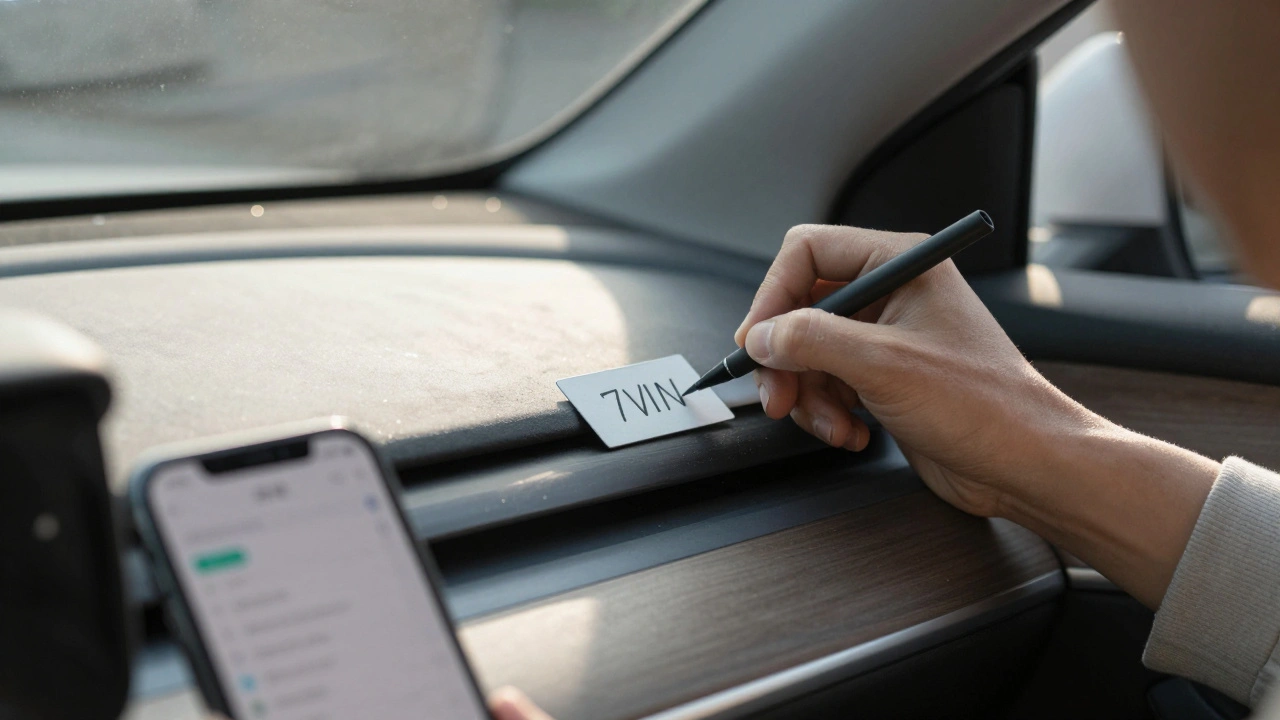When was the last time you checked your car's air filter? Yeah, it's one of those things we tend to forget about. But this little guy makes a huge difference in your engine's performance. A clogged air filter means your engine isn't getting enough clean air, making it work harder and use more fuel. Check it every few months to keep things running smoothly.
Brake fluid might not be something you think about often, but it's the lifeline of your braking system. If it gets too low or old, your brakes won't work as they should, which is not just scary but dangerous. Make it a habit to check and replace it as needed. No one likes the nail-biting experience of barely stopping in time.
Air Filters
So, what's the big deal about air filters? In simple terms, they keep dust, dirt, and debris from entering your engine. This isn't just about keeping things clean; it's about boosting your car's efficiency. A well-maintained air filter can improve your gas mileage and even help your engine last longer.
Air filters come in a few different types, primarily paper, foam, and high-performance cotton. Each has its strengths. For most everyday users, the paper filter is the go-to choice due to its balance between cost and performance.
Do You Need a New Air Filter?
Wondering how to tell if your car's air filter needs replacing? It's not something you can always see by just looking at it, but here are a few hints:
- Reduced fuel efficiency – Noticed you're spending a little too much at the pump?
- Strange engine noises – Popping or coughing sounds could be your engine gasping for air.
- Check the dashboard – Some newer cars will notify you if the air filter needs a change.
Typically, it's good to replace the air filter every 12,000 to 15,000 miles, but dusty or polluted areas might require more frequent changes. Check your car's manual for specifics.
DIY Air Filter Replacement
If you're a DIY type, swapping out your air filter is one of the easiest things to do. Here's a quick step-by-step:
- Turn off your engine and let it cool.
- Open the hood and find the air filter housing. It's usually a black plastic box.
- Open the box, take out the old filter, and pop in the new one. Make sure it's seated correctly.
- Close the housing, and snap or screw it shut. That's it!
By keeping your air filter in check, you're ensuring your vehicle runs at its best and cutting down on pollutants released into the environment. It's a small step for car maintenance but one that pays off in the long run.
Brake Fluid
Let's talk about brake fluid—the unsung hero of your car's braking system. You might not see it, but it's there, making sure your brakes can do their job. Without it, your brake pedal would just hit the floor with no results. It's the hydraulic fluid that transfers force into pressure, allowing you to stop the car effectively and safely.
Why Brake Fluid Matters
Brake fluid operates under extremely high temperatures and pressure. It's specifically designed to handle these conditions, but that doesn't mean it lasts forever. Over time, it can absorb moisture from the air, which degrades its performance, leading to soft pedals and longer stopping distances. Regularly checking and replacing your brake fluid is crucial for maintaining the efficiency of your braking system.
When to Check and Change
Most manufacturers recommend changing your brake fluid every two years or 24,000 miles, whichever comes first. However, if you live in a particularly humid area or drive your car hard, you might need to change it more often. Always refer to your car's manual for specific guidance.
Signs That Your Brake Fluid Needs Attention
- Spongy brake pedal: If your brake pedal feels soft or spongy, it might be a sign that there's moisture in your brake fluid.
- Warning light: Many modern cars have brake fluid level sensors, so watch for warning lights on your dashboard.
- Strange noises: Squealing or grinding when you brake might also suggest a fluid issue.
How to Check Brake Fluid
- Pop the hood of your car and locate the brake fluid reservoir—it’s usually a small, translucent container near the back. Make sure the car is on a level surface.
- Check the level against the “max” and “min” lines on the reservoir. If it’s below the “min” line, you’ll want to get it topped up or replaced right away.
- Examine the color. Fresh brake fluid is usually clear with a slightly yellow tint. If it's dark or dirty, it’s time for a change.
As with any car maintenance, if you're unsure, it's always best to consult a professional. Ignoring vehicle maintenance might save time now, but it could lead to bigger, costlier problems down the road. So give your car's brake fluid the attention it deserves to keep your ride smooth and safe.

Spark Plugs
Spark plugs might not look like much, but these little guys are a big deal. They're basically the match that lights the fuel in your engine. If they're not working right, you could face poor fuel economy, reduced power, or even a hard-to-start car. So, paying attention to your spark plugs is key to keeping your vehicle happy.
How They Work
Spark plugs are the key to igniting the air and fuel mixture in your engine. Each plug sits at the top of a cylinder, firing tiny bolts of electricity to ignite the fuel. This process needs to be spot-on for your car to run efficiently. Over time, though, plugs can wear out, get dirty, or just plain fail.
Recognizing the Signs of Wear
If the engine misfires or just runs kinda rough, it could be a sign your spark plugs need attention. Another clue? Odd noises under the hood, like rattling or knocking. When in doubt, pop the hood and give them a look.
- Check for signs of wear: look for damage or residue.
- Keep track of mileage: typically, it's best to change them every 20,000 to 40,000 miles.
- Use the right type: not all spark plugs are created equal. Check your vehicle’s manual for guidance.
Did You Know?
Modern vehicles sometimes have iridium or platinum spark plugs. These materials can last longer than traditional copper ones but still need regular checks. Also, consider the heat range; performance may vary under different driving conditions.
Take care of those overlooked car components with a little love, and they’ll keep your car running smoothly. Come on, don’t let something as tiny as a spark plug cost you big in repairs!
Wiper Blades
Ever get caught in a downpour with squeaky, streaky wiper blades? It’s a recipe for stress. Most folks don't realize how crucial these blades are until they desperately need them. Wiper blades ensure you have a clear view of the road, which is critical for safe driving. Yet, they often take the backseat in car maintenance.
The Lifespan of Wiper Blades
The lifespan of wiper blades isn't indefinite. On average, they should be swapped out every 6 to 12 months, depending on weather conditions and usage. Frequent exposure to sunlight or ice can wear them out faster. So, if you're living in a place with harsh weather, check them more often.
Signs Your Wiper Blades Need Replacement
- Streaks or hazy residue on your windshield
- Skipping motion during operation
- Chattering noise
- Visible cracks or tears on the blades
Pro Tip
Keep your windshield clean to prolong the life of your wiper blades. Dirt and grime cause additional wear. Some folks even wipe their blades with a damp cloth occasionally to remove any build-up.It's a small effort for a big difference. No more squinting through rain-soaked glass, wondering if you can trust your visibility and safety to a pair of struggling wiper blades.

Timing Belt
Alright, let's talk about the timing belt. It's not something you see unless you're taking your engine apart, but it's crucial for keeping everything in sync. Imagine your engine's parts dancing in a perfect rhythm—that's what the timing belt does. It makes sure the camshaft and crankshaft rotate in harmony, ensuring your engine runs smoothly.
The timing belt is typically made of rubber and reinforced fibers, but it's not immune to wear and tear. Over time, it can develop cracks or lose its grip. Ignoring a worn timing belt could lead to catastrophic engine damage, something nobody wants to deal with. Most car manufacturers recommend changing it every 60,000 to 100,000 miles. Check your car's manual for the specifics.
Think of it this way: spending a few hundred bucks to replace a timing belt is way better than forking out thousands for a new engine. Plus, a healthy belt helps your engine run more efficiently, which can save you a bit on gas.
Signs Your Timing Belt Needs Attention
- Ticking noises coming from the engine.
- The engine won't turn over, or it misfires.
- Oil leaking from the front of the motor.
If you notice any of these signs, it's a good idea to get it checked out pronto. Waiting too long can turn a small issue into a massive headache.
Luckily, modern cars often give you a handy indicator light on the dash when maintenance is due, but it's always best to be proactive. You don't want to find out your timing belt has snapped while you're in the middle of nowhere.





